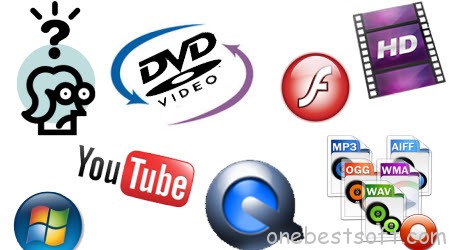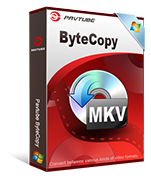Feeling frustrated when DVD won’t play on your computer? When you got a new DVD and you are eager to watch a movie, play a game, or install a program, but all these cannot be accomplished because your computer can’t play DVD. Sometimes it can be frustrating, especially when you have a deadline to complete a project. In most cases, many people tend to blame the most expensive component in a DVD drive or DVDROM drive (the laser) for every DVD problem that they experience which is usually unnecessary. Read this article to troubleshoot DVD playing issues now!
Such problems can be as a result of two things namely software and hardware problems. The two areas are the greatest contributors of the most common types of problems you are likely to encounter when using your DVD Drive (Hardware like Sony DVD Drive, Windows computer, Mac, MacBook Pro) and DVD Drive Software like Windows Media Drive, iTunes, QuickTime and VLC. 
Of course, when you encounter trouble with a DVD drive, the first thing that comes into your mind is to change the DVD. The process of changing the DVD is considered as the basic common diagnosis of the troubles that your DVD may cause you to experience. When the same problem occurs, again consider the following five tips.
Part One: Classification of DVD drive problems
Mechanical problems – Though not that common with DVD drives, but it is worth not ruling it out. Dirt, dried up lubrication, damaged parts are the main cause of mechanical problems that is associated with DVDs. When such problems occur you are likely to witness erratic problems or total failure. Dirty lens is the most common problem that might be behind your DVD problems, especially if your home or office is dusty or you have heavy smokers around. In such cases, cleaning the lens can work the magic for you. When such problems occur, it is important to check by yourself if you have the knowledge concerning the problem. But if you are not familiar with such problems it is advisable to seek an expert since you might end up worsening the problem if you are not familiar with the repair. However, it won’t hurt if you can save the situation and there continue with your activity.
Software problems – Software problems are much common with DVD drives or DVDROM drives. They are much easier to notice, especially if you realize that your DVD skips, continuous or repetitive audio noise, search or track seek problems, random behavior. Such problems are sometimes difficult to diagnosis and most people tend to use the wrong solution to solve these problems.
The causes of both problems (software and Mechanical) that make you wonder why DVD won’t play are often very simple, easy to establish, as well as quick and economical when it comes to repairs.
Part Two: How to Maintain Your DVD Player
CD and DVD players have a laser lens that needs to be cleaned periodically. To maintain your DVD player, occasionally unscrew the player’s case, so you can get at the lens to clean it. You need a screwdriver, canned air or a soft brush, a foam swab or camera-lens cleaner, and lens cleaning fluid from a camera store. Here’s what to do:
- Remove the top cover screws. If the cover wraps around the unit, there may be more screws to take off.
- Blow off the dust with canned air or a hair dryer set on cool.
- Dampen a foam or lint-free swab with a few drops of lens cleaner.
- You don’t need a lot, just a couple drops.
- Reassemble the cover and put the screws back in.
Don’t blame your CD or DVD player every time your music or favorite movie starts skipping or refuses to play. The disc may be dirty or scratched. You can purchase a cleaning kit at an electronics store, but rubbing alcohol is a lot cheaper and you can get it at the grocery store or pharmacy. If the problem is dirt or dust, here are some tips for keeping your discs in top condition:
- When you select a disc to play, the first thing you should do — every single time — is blow dust off, even if you faithfully keep your discs in their sleeves.
- Next, wipe your discs with a lint-free cloth dampened slightly in rubbing alcohol every time you use them. They not only accumulate dust, but also oily fingerprints that make dust stick.
- Put your fingers only on the edge and through the center hole.
And if your favorite disc is scratched, before throwing it out, try polishing it to remove the scratch. Disc repair kits are sold at electronics stores and some video stores.
It’s the bottom of the disc, the unadorned side, that the laser reads. That’s the side you need to clean. Source here: http://www.dummies.com/how-to/content/how-to-maintain-your-dvd-player.html.
Part Three: Most common DVD playing problems and likely causes
A. Intermittent or erratic operation
Sometimes you might find out that your DVD drive has mode problem. Sometimes it might play fine and sometimes skip or even abort. Such problems are common with both operating systems (Windows and Mac). Such problems can be attributed to:
- Dirty, scratched, or defective disc
- There is a possibility of dirty lens
- Extended length discs that the drive cannot reach
- Inability of loading (mechanical) unfailingly
- Poor connections, including missing or inconsistent optical deck shield
- Cracks in ribbon cable to optical pickup
- Unclean drawer or limit switches
- Power supply or logic problems
- External interference
- Internal damage in optical pickup
B. Does not recognize the DVD Drive displaying ‘disc’, ‘error’, etc
It is common to see a scenario where you insert your DVD into the drive and it does not seem to read or load. Then you are wondering what might be the problem. The causes of the problem might be one of the many that are listed below.
- Disc loaded upside-down
- Dirty, scratched, or defective disc
- Tainted or defective objective lens
- Damaged lens suspension or damaged lens cover which is putting a stop to free movement
- Dusty, gummed up lubrication, or spoiled in sled drive apparatus
- Defective spindle motor
- Improperly placed spindle table height
- Poor constituents in optical pickup
- Cracks in ribbon cable to optical pickup
- Broken down power supply, electronics, or control logic
- Poor connections as well as missing or an inconsistent optical deck shield
- External interference
| Basic troubleshooting DVD Player techniques
1. Click Start -> Run and after that type EVENTVWR in the window. Click OK. After which go to the event viewer, and then click Application log. 2. After getting the Application Error sources list, search for an event with an ID of 1005, after that Double click the event. 3. Note down the file name that will be listed in the description box. Take note of the file name after that close the Event properties 4. Open the file for a second time by double-clicking it. If not all of the files on the CD or DVD open, or your computer can’t play DVD , then the CD or DVDs, the drives or drivers are faulty. 5. Now you can do with adjusting servo (or, less likely, optical) configuration. |
C. DVD Drive Does not Play the DVD
In some instances, it is common to insert your DVD into your drive and nothing happens. Generally, DVD drives have proven to be very reliable, meaning such outright failures are not a common occurrence. Such problems are likely to be caused by
- Dirty contacts on RCA jacks on DVD drive or amp
- Bad connections to RCA jacks
- Dirty or defective muting relay contacts
- Defective components in the analog circuitry (final filter, muting, amp)
- Faulty power supply (for audio circuits if used)
- Dirty controls (probably on amp unless problem is with the headphones)
| Basic troubleshooting DVD Player techniques
1. Check your computer (this problem is mainly seen on XP computers). 2. Attempt to clean the disk drive with a disk cleaning CD or DVD. 3. Verify that the version of this program is the latest because of the recent improvement in the program. |
D. DVD keeps freezing or skipping
Dividing freezing and skipping is a common problem. Since DVD is coded in a spiral wave that initiates at the center of the disc and moves out to the outer edge, skipping and freezing is as a result of changes in the path of the DVD drive’s laser. Such changes are usually caused by:
- You might be having a defective disc that is either dirty or scratched
- Tainted or damaged objective lens
- Damaged lens suspension or damaged lens cover preventing free movement
- Dirt, gummed up lubrication, or damage in sled drive mechanism
| Basic troubleshooting DVD Player techniques
1. Gently wipe the disc with a damp cloth. Preferably, you can use a lint-free optical cloth similar to the one used for cleaning glasses. 2. It is important to clean the disk using the correct procedure, which is to rub lightly from the center of the disc to the edge in straight. 3. If the cleaning is not effective and most of your DVDs are behaving in a similar way, know that the problem is in your DVD drive’s lens. 4. Clean your lens using a DVD lens cleaner. |
When such problems occur, sometimes it is advisable to check if your DVD has been burned correctly. On the other hand, compatibility issues, which are more common, can cause the problem and many people never realize it. Then again, it is advisable to ascertain if the disc is encoded for your geographical region since a DVD meant for another region will never play on another drive that is meant for a different player.
Part Four: Six Steps To Help You Fix Common DVD Drive Errors
So you got yourself a fancy smancy DVD drive. It could be a burner or just a reader and it is just not working. How do you figure out what is wrong with it?
These tips to fix dvd drive errors will also work for a CD or CDR drive. The first thing we need to do is determine where the issue is. It can either be a physical issue like power not getting to the drive or a IDE / SATA cable has come unplugged. It could be a Windows operating system problem that is preventing your drive from showing up or reading disks and finally it could be that disk is garbage. You might have a scratched up dirty disk and it is unreadable by your player.
Let’s see how we can identify and resolve these issues. I see issues with drives on a daily basis in my day job as well as hundreds of questions coming in through my blog. Let me share some of my troubleshooting tips with you. Maybe it will stop the questions – but I doubt it!
These instructions can be used for both internal and external drives but some of the fundamentals might be a little different. Like the power cord versus the internal power connector, the USB interface or a IDE connector. But use your intuition to guide you.
Some of these problems are common both to the external and internal drive and can be fixed with a little application or by following the tutorials that come with these drives.
Step one: Is the drive not showing up in Windows Explorer? Here I can see my CD burner but not my DVD burner. My DVD burner is usually drive E:\. 
First things first, we should check the power and connections to your computer.External drives can be checked while the system is powered on but internal drives will need you to shutdown the system and remove the power cord before beginning.
If the cables are connected but loose pull them free and reconnect them.? Start the system back up and see if the drive or drives are showing up. If you have recently modified your drives in your system and have removed or changed jumper settings remember cable select is normally the best way to go. If you are on an external drive these jumpers will not matter.
When the system is on and the drive is getting power you can push the eject button and it will open. If it does not open and it is powered on it can be a physical issue which we will see below.
Step two: If your drive is getting power and will not open or close, it is time for the paper clip trick. Sometimes these drives get stuck closed and you cannot open them. This can be from someone spilling something or using the drive as a cup holder. Go get a paper clip and straighten it out. Ladies and gentleman we will perform this amazing feat of opening a stuck drive with a paper clip and only a paper clip. Are you ready? 
Push the paper clip into the small hole located on the right, left or slightly to the right of the left hand side in the older drive above. Pushing the paper clip in the hole releases the door and you can open it with your hands. If it is sticky use a damp cloth to clean it.
Step three: Your drive is opening and closing and it still doesn’t work? We need to check that the drive is connected to the computer. Just as you checked the power, check the connectors. See if the drive now shows up in your computer.
Step four: You have ruled out power and system connections. Now let us look at the device manager in Windows. Open it by right-clicking on My Computer and selecting manage. Then select Device Manager. On older machines it will be in the system properties and then device manager.? If there is a red exclamation point next to one of the items, resolve it and your problems will go away. The drive should appear like this: 
A device with an error will have this icon before it: 
Step five: If your drive has power and your Windows operating system recognizes it but still it does not read the discs it may be because of a dirty laser lens in the drive. Clean the laser lens with a cleaning kit or run some other discs after the cleaning kit and then try. If the drive works after cleaning it you have found your issue.
Step six: If the drive still is not reading your disk but it is connected and the system sees it, try another disk. If this other disk works it can be the disk. Some older drives cannot read CDR’s or CDRW’s. Try a purchased CD? and see if that works. If so you should probably replace your drive. Got any other tips for fixing DVD Drive errors share them with us in the comments! Source here: http://www.makeuseof.com/tag/six-steps-to-help-you-fix-common-dvd-drive-errors/.
Part Five: DVD Ripping/Backup Tools
If you are still seeking for a professional DVD copy and ripping program, here a Lifetime License – Best-selling DVD Ripping software- Pavtube BDMagic (available for Windows and Mac users) will do you a favor to cover your DVD ripping needs and provides the best solution to rip and convert DVDs to commonly used videos/audios!
Get DVDFab Alternative for Mac | Software Similar to DVD Shrink for Mac | Alternatives to WinX DVD Software | Free DVD Rippers
Free Trial:
– Pavtube old official address: http://www.pavtube.cn/blu-ray-ripper/
– Cnet Download: http://download.cnet.com/Pavtube-BDMagic/3000-7970_4-75922877.html
Offers pre-configured conversion profiles for well-known iOS devices (iPad/iPod/iPhone), Apple TV, Android devices(e.g. HTC, Samsung, Nexus, etc.), Blackberry phones & tablets, Game hardware(e.g. PSP, PS3, Xbox 360, Wii, etc.), and more. Experienced users can customize the conversion profiles according to their devices’ video playback specs.
Tip:1. If you want to rip Blu-ray and DVD with multiple audio tracks preserving, try Pavtube ByteCopy(Review) and refer to the steps here.
2. If you get some MKV, FLV, M4V, WMV, MOV, AVI, Tivo, XAVC, M2TS, H.265 etc. videos, and have trouble to play them on mobile devices, you can get Pavtube Video Converter Ultimate (Review) to transcode SD/HD Video files for viewing with the fastest speed and best video/audio parameter settings.
Read More:









